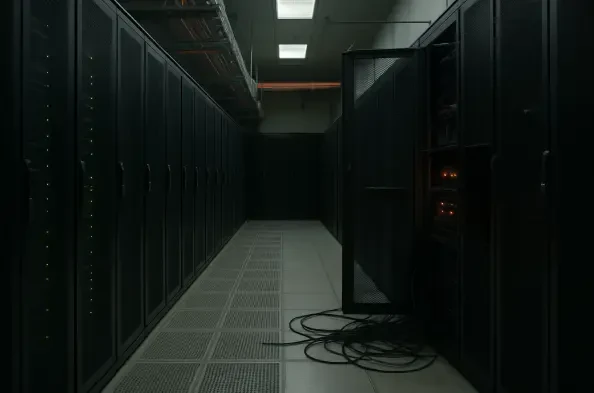In an era where digital infrastructure underpins nearly every facet of business, a recent Amazon Web Services (AWS) outage on a Monday morning sent shockwaves through thousands of customers, halting critical digital services across industries and exposing the fragility of over-reliance on single cloud platforms. This disruption, affecting a provider with a commanding 37.7% market share per industry estimates, has ignited a broader conversation among IT leaders and analysts about the pressing need for resilience in technology systems. This roundup gathers diverse perspectives, tips, and strategies from various industry voices to explore how businesses can safeguard against such inevitable failures, offering a comprehensive look at the challenges and solutions shaping the future of IT durability.
Unpacking the Disruption and Industry Reactions
Scope of the Outage and Immediate Fallout
The AWS outage, traced to an internal subsystem monitoring network load balancers in the US-East-1 Region, disrupted operations for countless organizations, with recovery unfolding in staggered phases. Initial mitigation efforts restored partial functionality, but full resolution demanded deeper investigation into the root cause. This incident underscored how a single point of failure in a dominant provider’s infrastructure can cascade across interconnected digital ecosystems, stalling everything from e-commerce platforms to critical enterprise applications.
Analysts across the board have noted the staggering financial impact of such disruptions, with median costs of downtime reaching approximately $2 million per hour, based on data from technology observability platforms. The ripple effects extended beyond immediate revenue losses, eroding customer trust and straining operational workflows. This event has prompted a renewed focus on the vulnerabilities inherent in centralized cloud dependency, pushing IT leaders to reassess their risk exposure.
Diverse Opinions on Cloud Dependency Risks
Industry perspectives vary on the degree to which businesses should rethink reliance on a single cloud provider. Some experts argue that the concentration of services with one vendor, while cost-effective, amplifies risks during outages, as seen in this AWS incident. They advocate for a fundamental shift in how organizations architect their digital foundations to prioritize redundancy over convenience.
Others, however, caution that diversifying providers is not a panacea and may introduce new complexities without guaranteed protection. This camp emphasizes that the root issue lies not just in vendor choice but in the lack of robust internal contingency frameworks. The debate highlights a critical tension between operational simplicity and the need for layered defenses, setting the stage for deeper strategic discussions.
Strategies and Tips from Industry Voices
Technical Insights into Outage Causes and Mitigation
Delving into the technical underpinnings, several IT specialists have pointed out that the AWS outage stemmed from a specific subsystem failure, revealing how even minor components can trigger widespread issues in hyper-connected environments. They stress that businesses must invest in granular monitoring tools to detect anomalies early, potentially averting full-scale disruptions. Such proactive diagnostics, though resource-intensive, are seen as essential for minimizing downtime.
Another tip circulating among tech circles involves stress-testing infrastructure under simulated failure scenarios to identify weak points before they manifest in real-world crises. This approach, paired with regular updates to recovery protocols, can significantly enhance system durability. The consensus is that while outages cannot be entirely prevented, their impact can be curtailed through meticulous preparation and foresight.
Building Resilience Through Multicloud and Hybrid Models
A growing number of industry analysts champion multicloud and hybrid environments as viable buffers against single-provider failures. They suggest that distributing workloads across multiple cloud platforms, or combining cloud with on-premises setups, offers a safety net when one system falters. This strategy, while promising, requires careful planning to align with specific organizational needs and budget constraints.
Contrasting views emerge on the practicality of such diversification, with some experts warning of the steep learning curve and cost implications involved in managing disparate systems. They recommend starting with incremental steps, such as identifying critical workloads for redundancy, rather than overhauling entire architectures overnight. This balanced perspective underscores the importance of tailoring resilience strategies to unique business contexts.
Financial Implications and Cost-Risk Trade-offs
The economic stakes of IT disruptions are a focal point for many industry observers, who cite examples like a major software update failure in mid-2024 that cost Fortune 500 companies over $5 billion in losses. They urge IT decision-makers to weigh the upfront costs of resilience measures against the potential devastation of prolonged downtime. Budget allocation for contingency planning, though often deprioritized, is framed as a non-negotiable investment.
Differing opinions surface on how to achieve this balance, with some advocating for a phased approach to adopting advanced resilience tools to spread out expenses. Others argue that the urgency of potential losses justifies immediate, comprehensive action, even if it strains short-term finances. This dialogue reflects the broader challenge of aligning fiscal responsibility with the imperative to safeguard operations.
Key Takeaways from the IT Community
Practical Steps for Strengthening IT Frameworks
Synthesizing insights from various sources, a recurring recommendation is for businesses to conduct thorough due diligence when selecting cloud vendors, focusing on their track record for reliability and support. Beyond vendor choice, crafting recovery plans that operate independently of any single provider ensures flexibility during crises. This dual focus on selection and autonomy forms a cornerstone of modern IT strategy.
Another actionable tip is to regularly audit existing systems for vulnerabilities, using both internal assessments and third-party evaluations to gain a holistic view of risks. Implementing these findings through updated disaster recovery protocols can bridge gaps exposed by incidents like the AWS outage. Such iterative improvements are widely seen as critical for staying ahead of evolving threats.
Long-term Considerations for Cloud Strategy
Looking at broader trends, many in the industry stress the need to rethink vendor dependencies over the long haul, advocating for policies that prevent over-concentration of services. This might involve setting internal thresholds for workload distribution across providers to maintain operational balance. The goal is to create a sustainable model that mitigates risk without sacrificing efficiency.
Additionally, fostering a culture of adaptability within IT teams is highlighted as equally vital, ensuring staff are trained to pivot swiftly during disruptions. Combining technical solutions with human preparedness offers a comprehensive defense against the unpredictable nature of digital failures. This forward-thinking mindset is gaining traction as a hallmark of resilient organizations.
Reflecting on a Critical Wake-up Call
Looking back, the AWS outage served as a stark reminder of the vulnerabilities embedded in today’s cloud-dependent landscape, prompting robust discussions among industry stakeholders. The varied insights gathered revealed a shared recognition of the high stakes involved, from crippling financial losses to operational paralysis. Moving forward, businesses are encouraged to take concrete steps, such as diversifying their cloud architectures and investing in tailored recovery plans, to build stronger defenses. Exploring hybrid models or engaging in cross-provider partnerships emerged as practical next steps to reduce risk. Ultimately, this incident underscored that resilience is an ongoing journey, urging IT leaders to remain vigilant and proactive in fortifying their systems against future disruptions.






